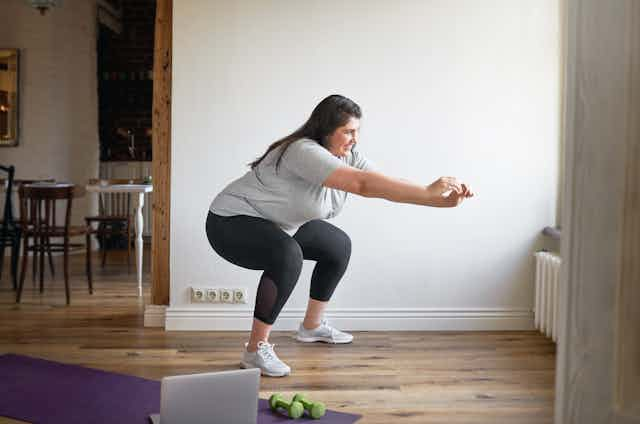The glutes are the large, powerful muscles in your bum that help support the pelvis, stabilise the hip joint and allow the hip to move.
Countless social media posts extol the virtues of building strong glutes through exercises such as squats. However, most of what you hear from such “gymfluencers” is about how the bum muscles look.
Forget about how they look; what about what they do? Why is having big, strong glutes important for your body to function well?
In fact, having strong bum muscles is crucial to good musculoskeletal health.
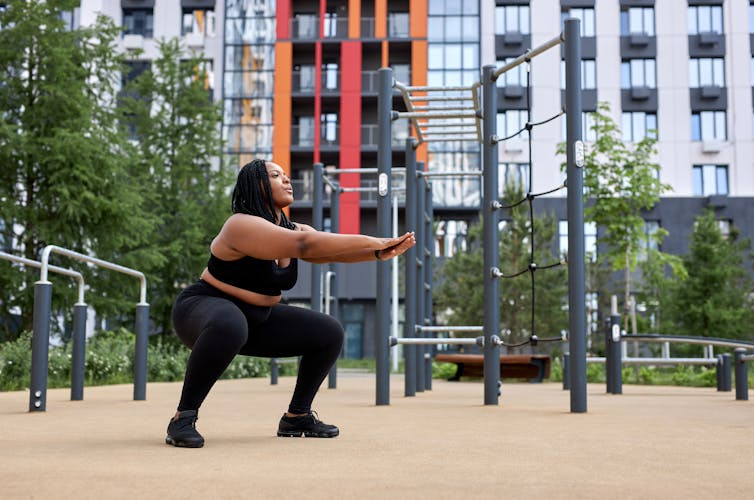
Read more: We're two physios who ran away with the circus. Here's what we learned
Bum muscles hold your body up and protect the hip joint
The gluteal muscles are a group of three separate muscles, each with unique anatomical structure and function.
The deepest and smallest muscle is called the gluteus minimus, which is very close to the hip joint itself.
Overlaying gluteus minimus is the gluteus medius. This one is relatively large and spans the whole outer surface of the pelvis.
The gluteus maximus is the largest of the three gluteal muscles and overlays both gluteus medius and minimus. This muscle is what gives the the bum its distinctive bum-like shape, but it plays a very important role in the way your body functions.
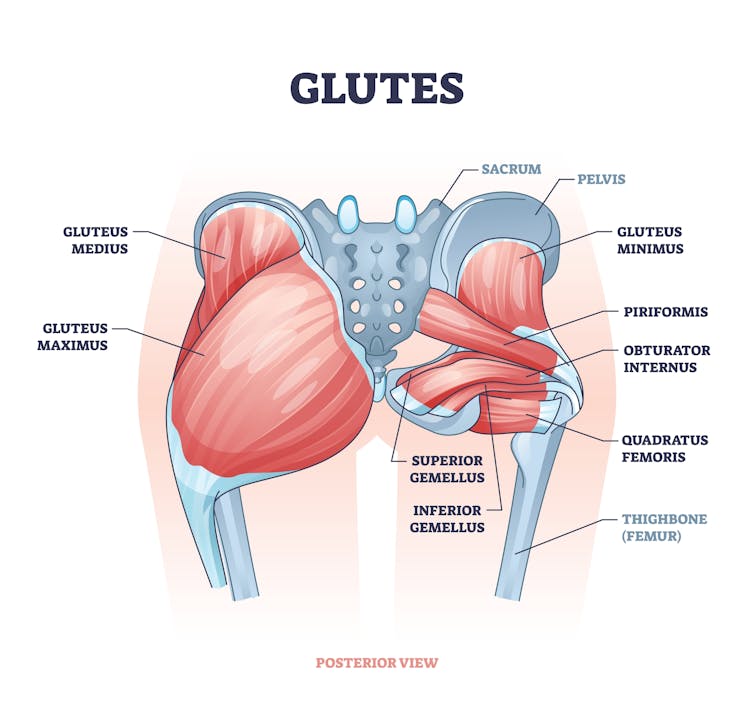
In combination, the gluteus maximus, medius and minimus gives rise to many hip movements, and provide shock absorption when you’re walking or running.
These muscles work together with your brain to generate a lot of power to hold your body up as gravity tries to pull it down. They also protect the hip joint from impact and from shearing forces that might cause long term damage.
Some of our work has identified some people with hip pain also have impairments in the gluteal muscles.
These impairments could reduce the bum muscles’ ability to protect the joint against long term damage and potentially affect a person’s ability to bear weight (for example, when standing on one leg or climbing stairs).
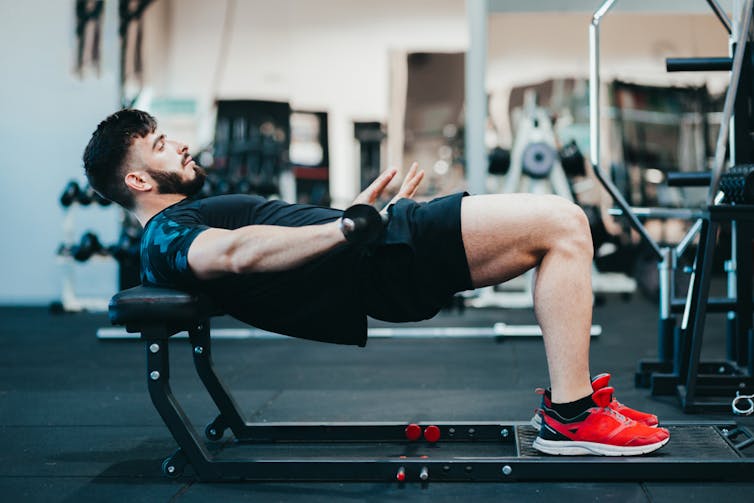
A reduction in muscle size and an increase in non-active tissue such as fat has been reported in hip conditions such as greater trochanteric pain syndrome (a common type of hip pain, also known as gluteal tendinopathy).
The same is also true for hip osteoarthritis, which affects the whole joint.
The rates of osteoarthritis in Australia are increasing, with one in every seven hip joint replacements conducted in people under the age of 55. However, it’s worth noting just because you have signs of arthritis on hip x-ray or MRI, it doesn’t mean you will have pain or develop pain.
Research suggests the way a person moves may contribute to the risk of hip osteoarthritis in young people.
If you do have hip pain, bum muscle strengthening is recommended as the first line treatment.
But strong glutes have also been shown to improve your day-to-day function, especially in those with hip osteoarthritis.
In particular, people with hip osteoarthritis who have stronger glutes walk faster and longer distances and climb stairs faster than those with weaker glutes.
Should I do my bum exercises?
Ultimately, better bum muscle function is likely to be helpful and is often recommended by doctors, physiotherapists and other health-care practitioners.
They may prescribe certain exercises to strengthen your glutes and target problems around the hip area.
Having weak glutes is associated with:
patellofemoral pain (pain under the knee cap) and
greater trochanteric pain syndrome (the common type of hip pain we mentioned earlier, also known as gluteal tendinopathy).
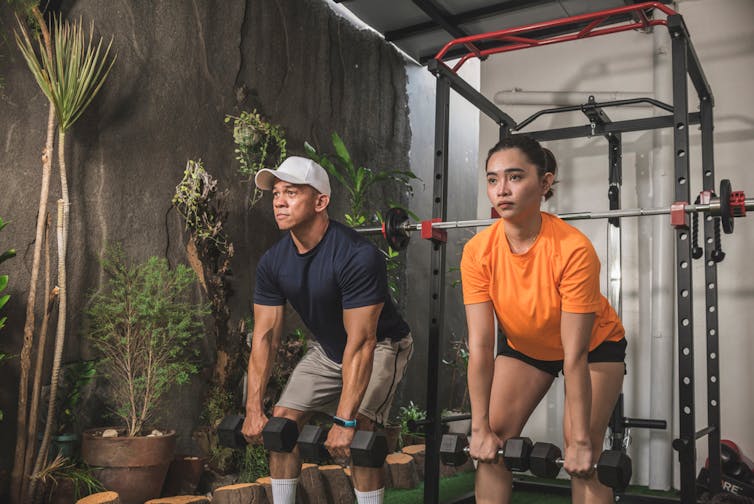
Glute strength may even have a role to play in keeping your pelvic floor in good shape (although further research is required).
That’s not to say doing your bum exercises will automatically cure all these ailments; each case is unique and involves a range of factors. But having strong glutes is, in general, very important for hip and pelvis stability and function.
No matter if you are a gymfluencer, a professional sports person, or just a regular bum-owner, having strong glutes will keep you in good stride.
Read more: Physio, chiro, osteo and myo: what's the difference and which one should I get?

